Family : Asteraceae

Text © Dr. Salvatore Cambria

English translation by Mario Beltramini
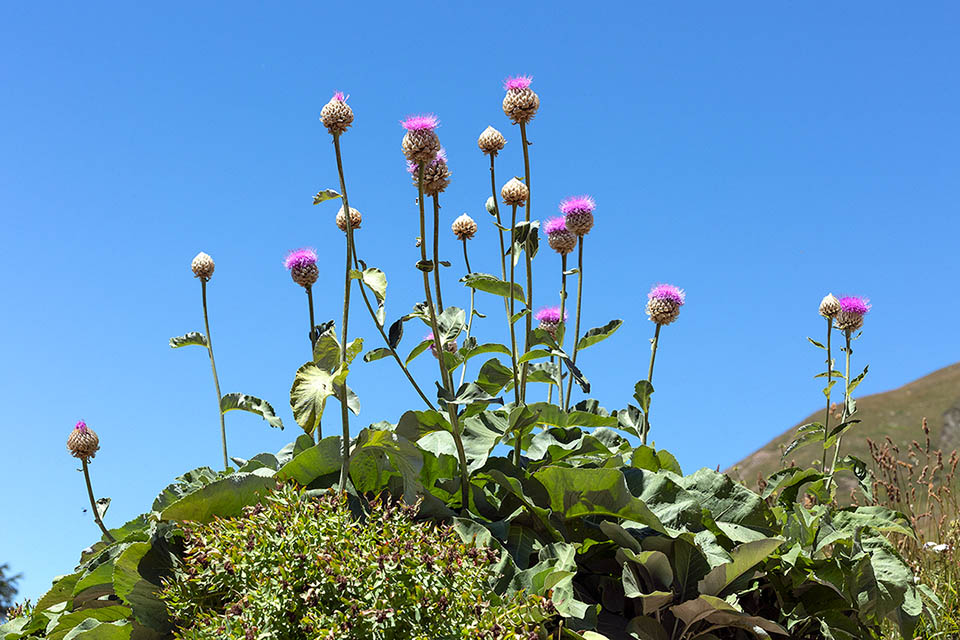
Rhaponticum heleniifolium is endemic to western Alpine area. Can be found in France, Austria and Switzerland, but its presence in Italy is quite doubtful © Giuseppe Mazza
Rhaponticum heleniifolium Godr. & Gren. is a species belonging to the family of the Asteraceae, described by the French naturalists Jean Charles Grenier (1808-1875) and Dominique Alexandre Godron (1807-1880) in the second volume of their remarkable opus “Flore de France, ou Description des Plantes qui croissent naturellement en France et en Corse” published between 1848 and 1856.
The generic name Rhaponticum refers to the resemblance of the leaves of some species of this genus with those of the genus Rheum (in particular with Rheum rhaponticum L., taxon diffused in western Asia), whilst the specific name heleniifolium recalls the resemblance of the leaves of this species with those of Inula helenium L.
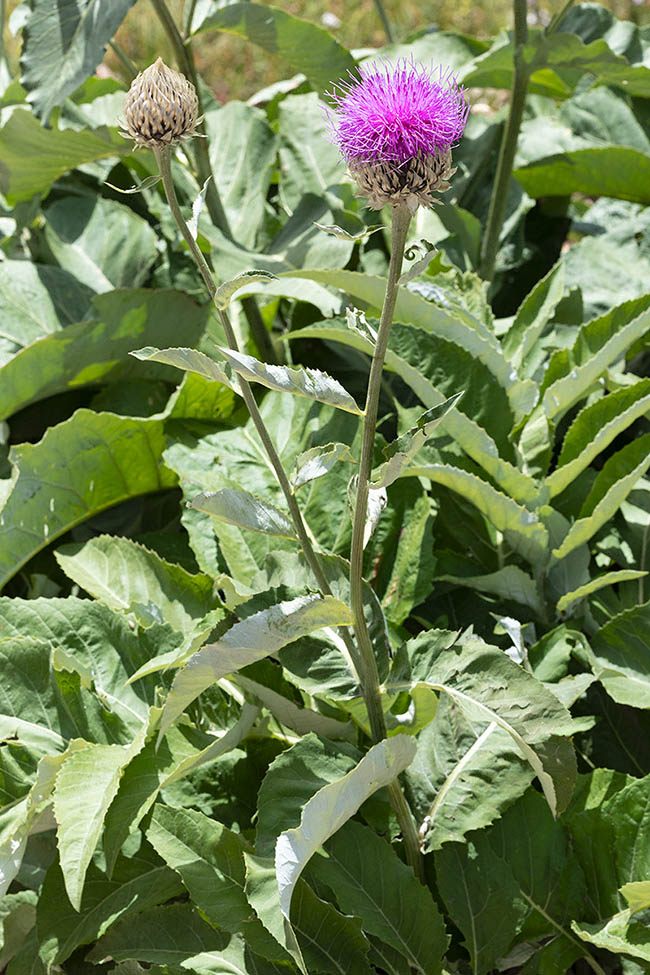
Considerably sized for an orophyte, it may even reach the height of 150 cm © Giuseppe Mazza
It is a perennial herbaceous plant of considerable size as it may reach a maximum height of 1,50 m.
The stem departs from a rhizomatous root system and presents erect, streaked and covered by cobwebbed hairs.
The basal leaves, up to 20 cm wide and 30-40 cm mpng, usually have an entire lamina with lanceolate or strictly elliptic shape, at times lirate, with only one pair of segments.
The lamina narrows abruptly towards the petiole rather pronounced in the basal leaves.
Conversely, the upper leaves present a more or less deeply lobate lamina, at times pinnatisect. Moreover, they become progressively almost sessile and smaller (10-22 cm x 3-6 cm). The lower pagina of the lamina is white-tomentose, Whilst the upper one is green.
The flowers are united in a big capitulum inflorescence (6-10 cm of diametre), formed by an involucre composed of several densely ciliate bracts (or scales), with obtuse shape and membranous appendage, brown and fringed (at times divided in 2-3 flabellate lobes), arranged in several series in an imbricated way inside of which a receptacle with straws acts as base to the flowers.
These last are all of tubulous type (in fact, the ligulate ones are completely absent in this genus), hermaphroditic, tetracyclic (4 verticils are present) and pentamerous (each verticil has 5 elements).
In particular, the calyx is formed by sepals reduced to a small crown of scales, whilst the corolla is tubulous with a 5-lobed apex, of purplish colour.
There are 5 stamina with free filaments and anthers merged in a sleeve surrounding the style. This presents two diverging stigmas and one inferior ovary, monolocular, originating from 2 carpels.
The anthesis occur during the summer period, between July and September. The fruits are achenes with a featherly bristle pappus, whose inner are bigger than the outer ones. The chromosome number of Rhaponticum heleniifolium is: 2n = 26.
The species is endemic to the western Alpine area and is in particular present in France, Austria and Switzerland, whilst its presence is quite doubtful in Italy.
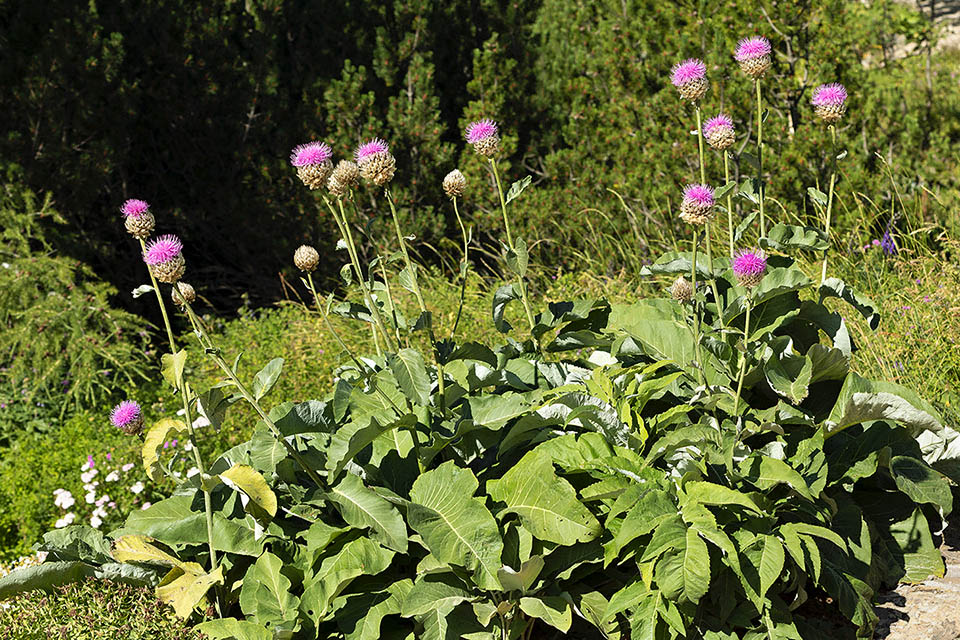
Its choice habitat is the communities of “tall herbs fringes”, formations of tall herbs present in the upper and subalpine mountain plain between 1500 and 200O m © Giuseppe Mazza
It grows in the alpine or subalpine plains in the meadows and in the rocky slopes of calcareous nature between 750 and 2500 m of altitude.
From the vegetational point of view, its preferred habitat is formed by the communities of “tall herbs fringes”, that is the formations of tall herbs present in the upper and subalpine mountainous plain between 1500 and 2000 m.
In the few locations where it is present, the species avers fairly abundant, however its diffusion is heavily limited by the grazing, being this a plant appreciated by livestock.
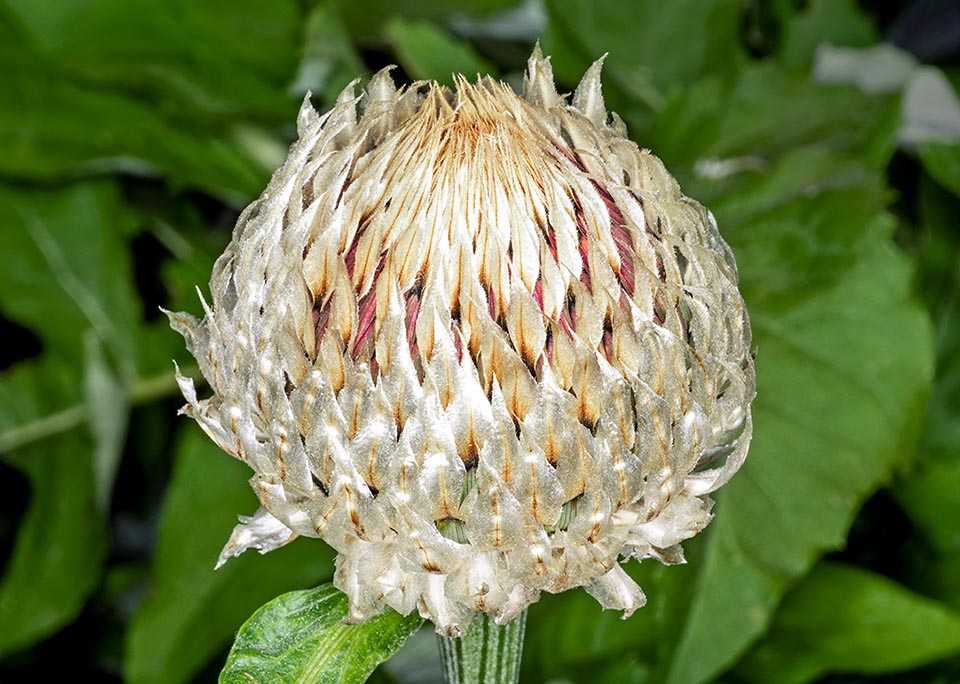
The 6-10 cm capitulum is protected by an involucre of bracts arranged imbricate in more series. Inside it a receptacle with straws acts as base for flowers © Giuseppe Mazza
From the nomenclatural and taxonomic point of view the genus Rhaponticum presents a certain complexity and the opinions of the various Authors are often diverging from each other, also due to its patchy distribution and to the tendency to differentiate highly localized ecotypes.
Also for what Rhaponticum heleniifolium concerns, are present various nomenclatural treatments : for instance, in the “Flora d’Italia” (Flora of Italy) by Pignatti (I edition of 1982) is mentioned as Rhaponticum scariosum subsp. lyratum (Bellardi) Hayek, whilst in other contributions is mentioned as Stemmacantha heleniifolia (Godr. & Gren.) Dittrich.
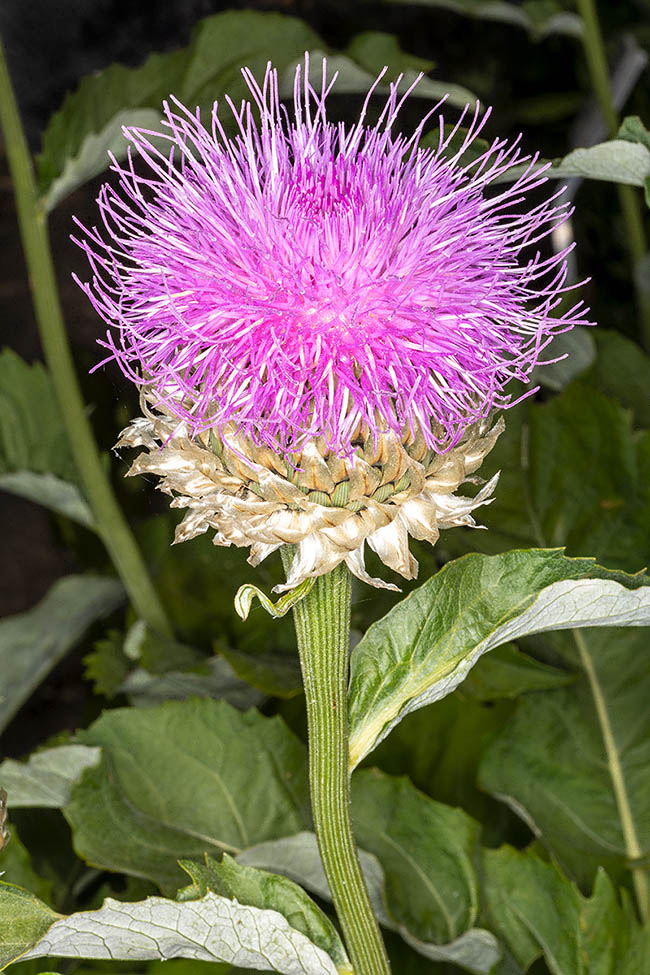
These, purplish, are all hermaphroditic of tubulous type, in fact the ligulate ones surrounding for instance daisies are absent, but the capitula sculptural form attracts eyes of hymenopterans and the splendid colour the travellers gaze © Giuseppe Mazza
However recent phylogenetic researches have included some species of the genera Stemmacantha and Leuzea in the more comprehensive genus Rhaponticum.
This last genus during these last years has been subject of several phylogenetic and molecular studies that have highlighted its monophyletic character, coherent the morphological and cariological data and have also allowed us to explore some biogeographic aspects relevant to the distribution of the various species.
Particularly, according to some scholars, the genus should have originated in the Caucasian area or in Middle East, from where it should have expanded towards the Alpine area probably passing through North Africa and the Iberian Peninsula.
Besides the nominal subspecies is known the subsp. bicknellii (Briq.) Pign., recently elevated to the rank of species as Rhaponticum bicknellii (Briq.) Banfi, Galasso & Soldano.
This is an endemism of the Ligurian and Maritime Alps, present in only 7 stations (all in Italy but 2 falling within the French territory close to the boundary with Italy).
This plant distinguishes for a slightly minor height (up to 100-120 cm), basal leaves with pinnatisect lamina with 3-4 couples of segments with lanceolate shape and serrated edges, base of the lamina obtuse, sessile and deeply incised cauline leaves, involucre with only sparsely ciliate bracts and capitulum with 7-10 cm of diametre.
Pollination occurs by insects and, in particular, is done by some species of hymenopterans like bees and bumblebees.
The seeds are dispersed by the wind thanks to the presence of the pappus, an appendage of the fruit, light and featherly, that guarantees their diffusion over long distances.
Once on the ground, the seeds can be transported further by the ants even for quite significant traits.
Synonyms: Centaurea heleniifolia Fritsch (1907), Centaurea lyrata Bellardi. (1792), Leuzea rhapontica (L.) Holub subsp. heleniifolia Holub (1973), Rhaponticum lyratum (DC.) Bergmans (1939), Stemmacantha heleniifolia (Godr. & Gren.) Dittrich (1989).
→ To appreciate the biodiversity within the ASTERACEAE family please click here.>
